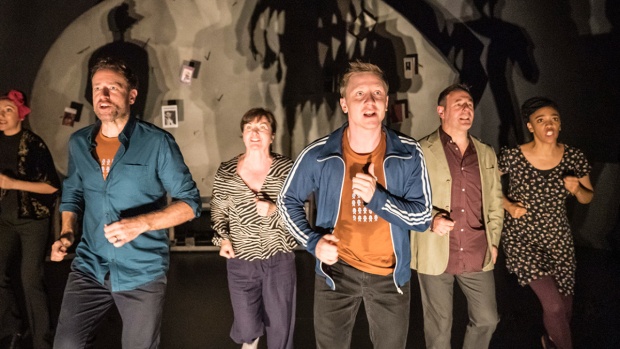Part autobiography/part self-help book, Matt Haig’s Reasons to Stay Alive discloses the author’s journey with depression and roads to recovery. Sarah Mortimore reviews the play and catches up with Janet Etuk, who plays Andrea, Matt’s girlfriend.

Aged 24 and on a working holiday with his partner in Ibiza, Matt suddenly fell ill, overwhelmed with panic and suicidal thoughts that marked the start of a long battle with depression. The book chronologically recalls Matt’s experience from Ibiza to recovery and is also spliced with advice and facts about depression. These insights, such as ‘how to be there for someone with depression or anxiety’ offer the book as a form of self-help, helping connect thousands of readers to the feelings they may encounter in their everyday lives. In his adaptation from paper to stage, director Jonathan Watkins has also succeeded in creating this intimate relationship between the narrative and its audience, something crucial when discussing a topic that everyone in the audience can probably relate to in one way or another.
In Watkins’ adaptation, depression-stricken Matt (Mike Noble) talks across time with older Matt (Phil Cheadle) who offers the uplifting gift of hindsight that in the end, he will come through the darkness. They are joined by his support-crew: devoted girlfriend Andrea, and Matt’s concerned parents (Chris Donnelly and Connie Walker). The supporting characters brilliantly demonstrate the experience of what it’s like to support someone with depression, while remaining subtle enough to put Matt and his thoughts and emotions centre stage. Etuk says writer April De Angelis gave them a lot of freedom when creating these characters, and she really enjoyed this autonomy to develop Andrea herself. The supporting actor’s neutrality also helps with the relatability of the play, and I think their experience resonates with the audience more directly because they are not defined by big personalities.

Simon Daw’s set brings Matt’s mental experience and its impact to the fore, as the actors are framed throughout by a three-part movable cerebellum. Its fractured appearance highlights the physiological aspects of depression, and it also suggests cracked eggshells, evoking the opposition between new life and death – after all, Matt does wish to have ‘never been born’. With imaginative choreography and physical theatre, the play is pulsating and dynamic, not easy pull off when it centres around a character who can barely walk to the shops. Sequences of running and dancing energise the narrative, and as Janet Etuk (Andrea) says, ‘through movement and not just words, we can understand a lot more’. Etuk says this physical element excited her from the outset, making the play a lot of fun, and allowing the cast and audience to ‘tap into another level’. She says this movement was equally important off-stage, and when I asked Etuk how the cast kept their spirits up when exploring such darkness, she says dancing was key. Everyone had a song of choice and putting this cast playlist on shuffle and dancing became a great break time ritual (Etuk loves anything by Postmodern Jukebox).

In just an hour and 15 minutes, the adaptation is a speedy interpretation. While this meant it didn’t quite match the emotional depth of the book, this was not necessarily a weakness, and the humour and movement ensured it remained thoroughly enjoyable. The book has triumphed in bringing conversations about depression into the popular mainstream, and equally, it’s the play’s universal accessibility that makes it a masterpiece. As Matt himself says, ‘depression looks different to everyone’, but I think that everyone will see something they can relate to in Watkins’ adaptation.
Image Credit: What’s on Stage
Sarah Mortimore

